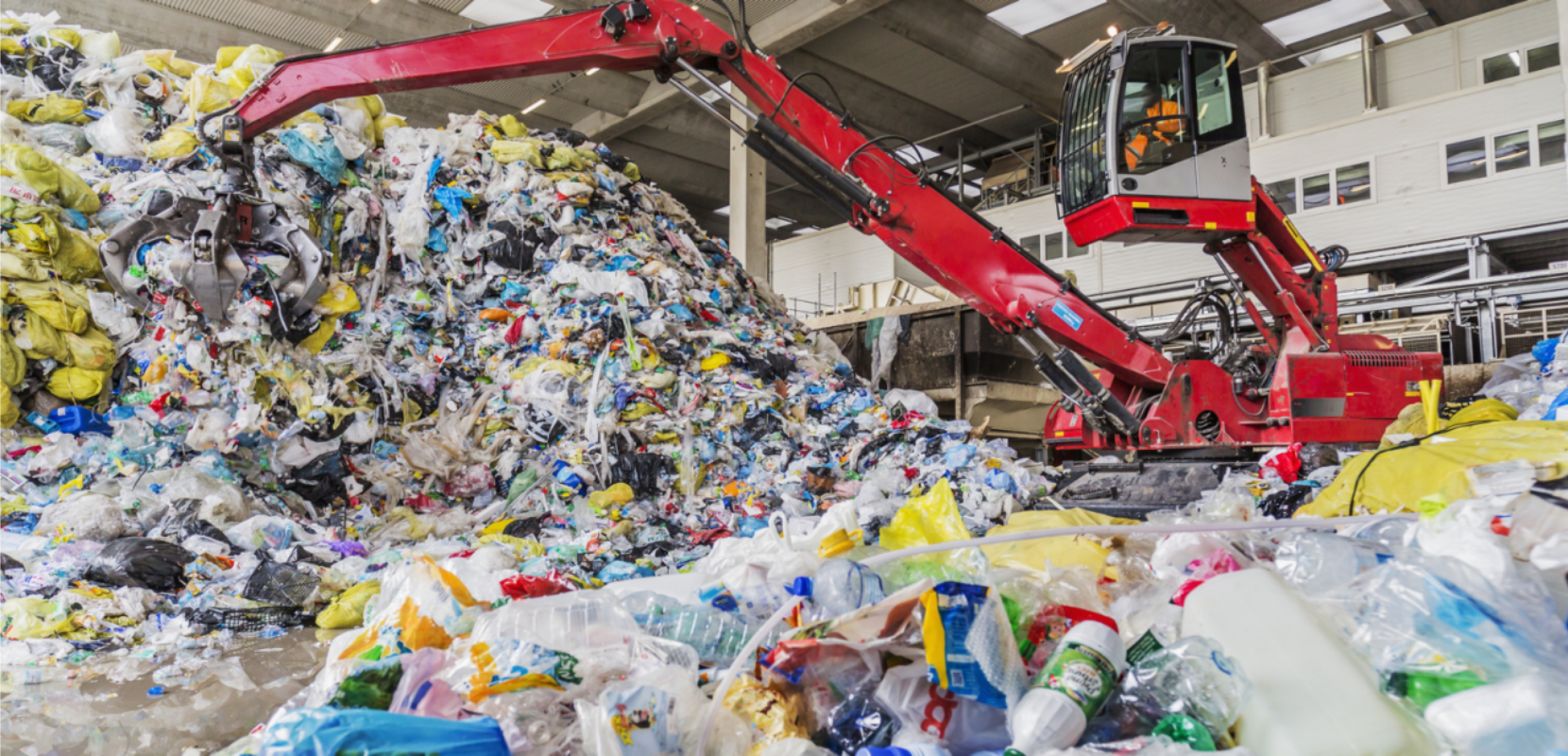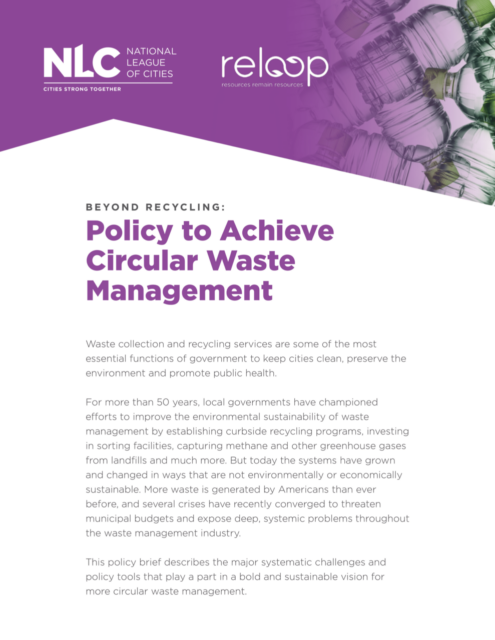Waste collection and recycling services are some of the most essential functions of government to keep cities clean and promote public health.
For more than 50 years, local governments have championed efforts to improve the environmental sustainability of waste management services by establishing curbside recycling programs, investing in sorting facilities, capturing methane and other greenhouse gases from landfills and much more.
Cities all over the country have prioritized waste management infrastructure when committing to new sustainability goals. Not only is recycling one of the most visible ways a city can commit to sustainability, it is often the most cost-effective option, while reducing greenhouse gas emissions (GHGs), air and water pollution. A 2018 report from C40 Cities and McKinsey identified improved waste management as one of the top four most important areas of intervention for climate action, because of the impact it can have on methane emissions reduction, improved public health, increased economic opportunity for local industry and sustained municipal control over waste operations.1
But the systems have grown and changed in ways that are not environmentally or economically sustainable. More waste is generated by Americans than ever before, and several crises have recently converged to threaten municipal budgets and expose deep, systemic problems throughout the waste management industry. Recycling and diversion rates have plateaued for several years, and there is serious risk that we are moving backward at a time when we urgently need to make rapid progress.
This policy brief was developed in partnership with Reloop North America. Reloop works at the intersection of governments, industry stakeholders and non-governmental organizations that share a common vision of thriving circular economy. Cities will continue to lead in important ways, but achieving this vision will require the support of haulers, materials processors and private consumer product manufacturers – to change policy at all levels of government.
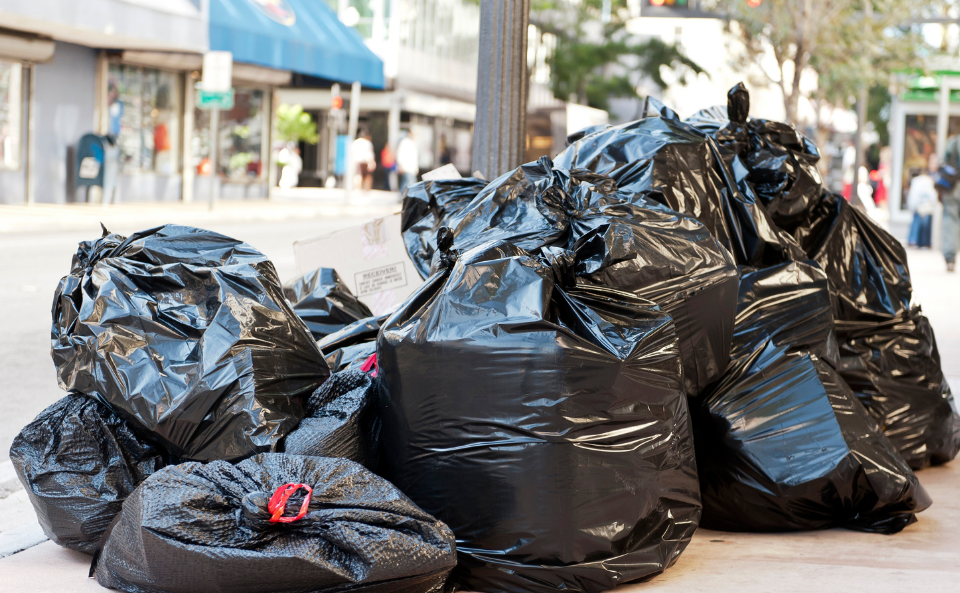
Several different challenges within the waste management industry are converging to threaten the long-term viability of recycling and prospects for more sustainable waste management.
Market characterized by complexity & fragmentation. Recycling in the U.S. is conducted by an incredibly complex network of local governments and private sector participants who collect and process materials. Residential, multi-family, commercial and institutional collection for schools, universities or hospitals are frequently different services, and each of these services are frequently different between cities – even within the same metropolitan region.
- Only 53% of households have universal access to residential curbside recycling, and another 6% opt into subscription-based services.2
- Confusion over material recyclability remains pervasive, leading to misplacement of materials in the recycling stream. Approximately 17% of material collected for recycling by weight is “contamination” that is not recyclable and can ruin other recyclables.3
Growing Plastic Crisis. Cheap to manufacture, sanitary and durable in a variety of forms, plastic is one of the most versatile and useful materials that has ever been developed. Unfortunately, once it’s produced plastic is not biodegradable, and an unimaginable amount of plastic waste is accumulating in nearly every corner of the globe. This pollution is on the verge of becoming an existential crisis to both human and ecological health. Most types of plastic products are not designed with recyclability in mind. Plastic products such as cups, plates, bags, plasticware and packaging — practically any product labeled plastic 3, 4, 5, 6 or 7 — are not typically recycled.
- The U.S. generates more plastic waste than any other country and only 8% of it is recycled.4
- The Center for International Environmental Law has shown that toxic chemicals from plastic threaten human health through inhalation, ingestion and other exposure at every stage of its lifecycle.5
By the Numbers
53%
US households with universal access to residential curbside recycling.
86%
Americans who believe the world is facing a plastic and packaging crisis.
4.9 pounds
Waste generated per American every day – more than any other country.
National Sword. For decades, recyclables collected around the world were purchased by China where manufacturers hoped to reuse whatever they could salvage, with little regard for quality. But in 2017, the Chinese government passed a series of policies commonly and collectively referred to as “National Sword.” This identified 24 types of material that would no longer be accepted and set strict limits on contamination for scrap metal and other materials that the country would continue to accept, particularly low-quality plastics. The standards are effectively impossible for many single-stream recycling programs to meet, and international commodity markets for recyclable materials crashed as a result. The idea that all – or even most – of the materials Americans put into their recycling bins were being recycled effectively has always been a fantasy, and National Sword has forced us to confront that reality.
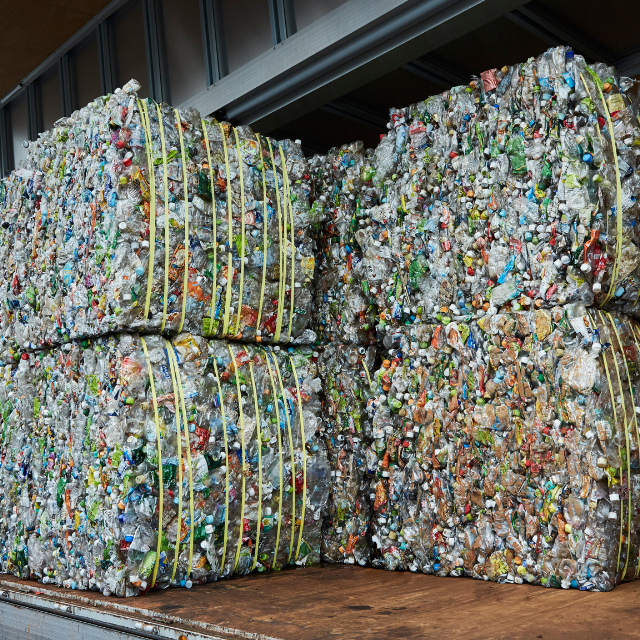
- Prior to China’s ban, 95 percent of the plastics collected for recycling in the European Union and 70 percent in the U.S. were sold and shipped to Chinese processors.6
- The combined value of curbside residential recycling material declined by 41% between 2017 and 2020, primarily due to a drop in fiber prices.3
COVID-19 Pandemic. While the challenges above have been slowly building for decades, the COVID-19 pandemic came as a sudden shock. The results have been devastating to recycling by threatening the health of the workforce, disrupting operations and weakening the underlying economic conditions.
Trash and recycling collection is already one of the most dangerous jobs in the US, with the fifth-highest rate of fatal injuries according to the Bureau of Labor Statistics. This labor force of front line, essential workers all needed personal protective equipment and social distancing to collect, haul and sort materials. As the virus spread, a lack of healthy drivers forced many cities to temporarily halt recycling collection – simply picking it up with the trash. At other times material recovery facilities (MRFs) would be shut down due to an outbreak among facility employees. Changes in global reductions in economic activity and travel also caused oil prices to drop. This widened the price gap between virgin and recycled plastic, making recycled plastic even less competitive than before. Even if it were technically feasible to recycle more plastic, there are fewer buyers.7
- Recyclers all over the world felt the effects as business dwindled “by more than 20% in Europe, by 50% in parts of Asia, and as much as 60% for some firms in the United States.”7
- In December 2020, Memphis, TN reported 25% of its waste crews either had COVID-19 or were in quarantine, leading the city to temporarily halt recycling collection.8
- In Los Angeles, CA, only five of the 17 facilities that accepted recyclables in Los Angeles were fully operational throughout the year in 2020.9
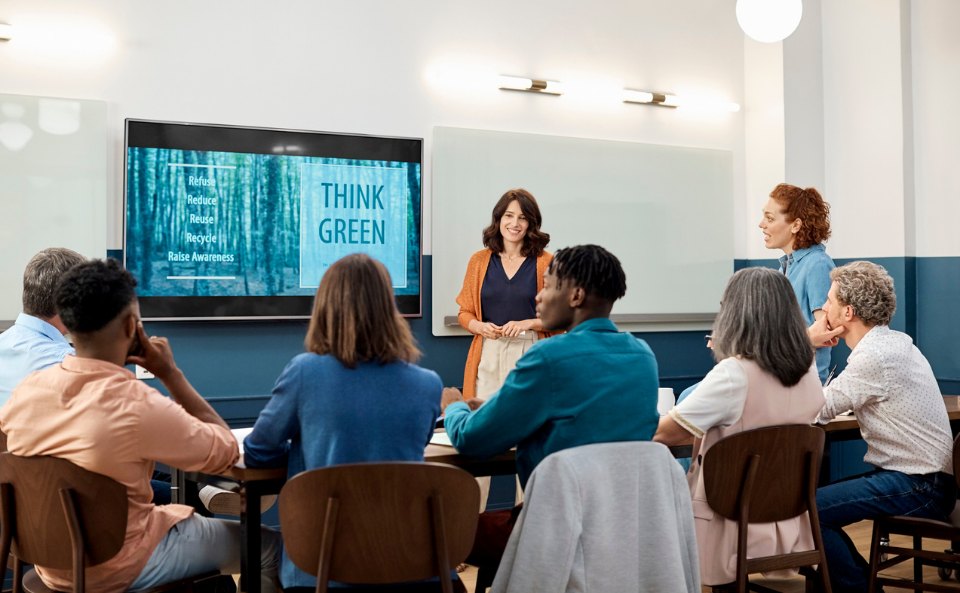
Systemic challenges require systemic reform. Efforts to educate residents and reduce contamination may be part of the solution, but these are inadequate to meet the current challenge and miss entirely the structural problems at play. Cities need the support of haulers, materials processors and private consumer product manufacturers to change policy at all levels of government – and put America on a serious path toward zero-waste. The recommendations of this policy brief are guided by two underlying principles:
1. Embrace the Circular Economy
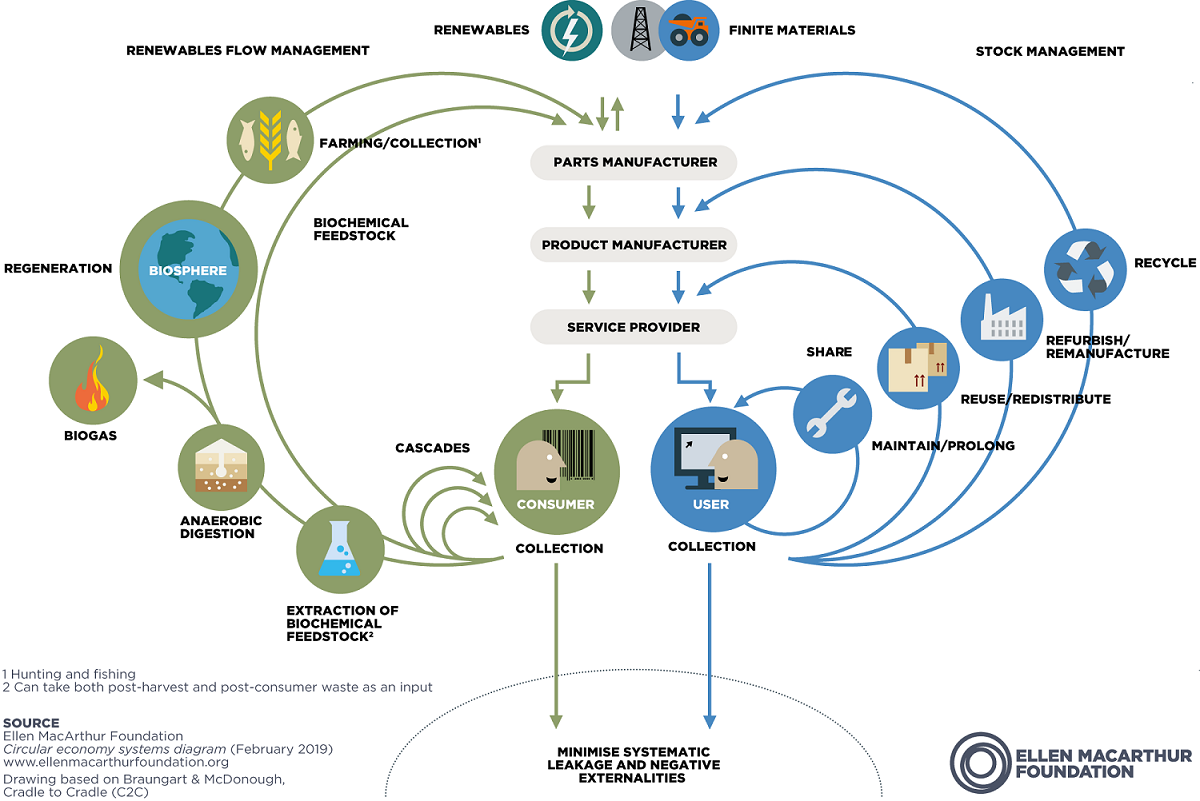
A circular economy is a new system where no resources go to a landfill, but rather designed for repair and reuse. Right now, most systems prioritize treatment and disposal over reduction, reuse or redesign; however, cities must use resources like the butterfly model (Figure 1), as guidance on how to actively move towards circularity. Cities should also conduct a consumption-based emissions inventory, which more accurately accounts for material-based greenhouse gas emissions – to inform their climate planning. This has already become a standard part of municipal emissions inventory work in dozens of cities across the United States.

Putting it into Action
Munich, Germany
Problem: Recognized need to address waste concerns higher up on the waste hierarchy.
Solution: In 2000, Waste Management Corporation Munich (AWM) launched its first secondhand store focusing on reuse and repair. The success of the original location and the need for additional space allowed for expansion in 2016 to Halle 2, a customer-friendly, bulk reuse center that collects items that can be repaired (if needed), cleaned and resold. Specific collection points for items that can be diverted to Halle 2 have been installed at Munich’s 12 recycling centers. Halle 2 is financed by AWM with a €1 million budget, and all staff is employed by AWM. As a social enterprise, success to Halle 2 does not only mean economic viability. It must also be able to pay workers fairly, while covering operational costs. Halle 2 wants to involve the whole Munich community by promoting reuse and repair as an issue that affects everyone.
Outcome: AWM calculates that around 1,000 tons of items are reused or repaired at Halle 2 each year and aims to double items in the next few years of operation. Through their volunteer program and local organizations, Halle 2 also serves as a space for professional development - hosting training programs for individuals to learn how to repair items, as well as repair “cafes” to encourage community members to repair broken items. It also hosts cultural events and coordinates with other social enterprises that have expertise in repairing hard to repair/reuse items like electronics, textiles and bicycles.10 Munich has one of the most successful recycling and waste infrastructures in Europe.
2. Maintain Local Authority
City leadership and authority are essential to collection of material for recycling and solid waste. Local governments are closest to their residents, most responsive to their concerns and best positioned to deal with unique conditions. While more resources and support are needed from other levels of government as well as private industry, this should not erode or preempt the role of local government.
Around the country, states are working with cities to adopt laws that improve the performance and consistency of local collection services.
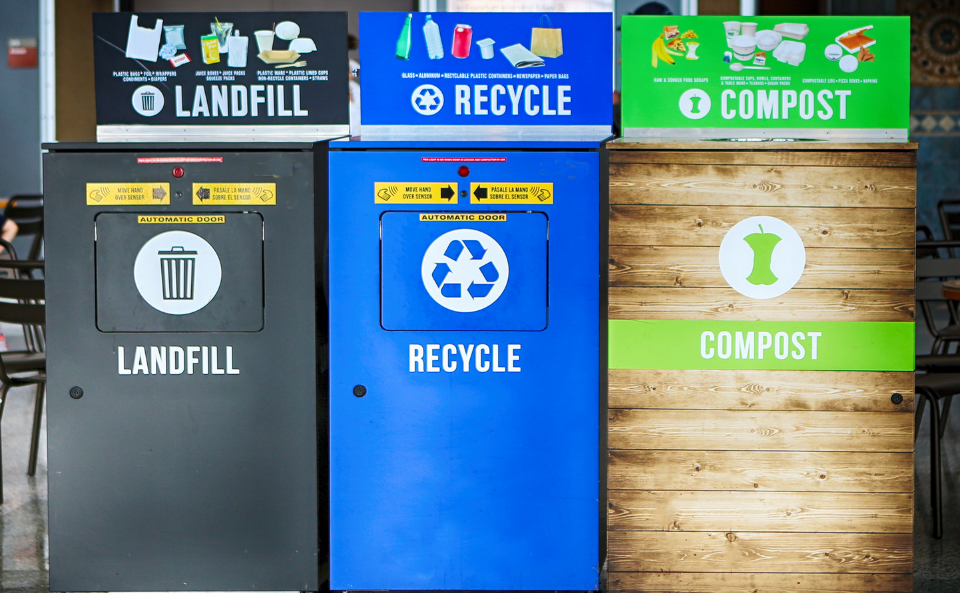
Putting it into Action
State of Vermont
Problem: Much of the waste that is sent to landfills is recyclable material or organic material that can be composted, and Vermont’s recycling rate had hovered between 30-36% for about 20 years.
Solution: In 2012 the State of Vermont passed a Universal Recycling Law that established a timeline to ban three major categories of material contributing to trash bins and expanding landfills. The ban prohibited recyclables, yard debris and compostable food scraps in trash bins. The recyclables ban took effect in 2015, the yard waste ban in 2016, and the final ban on food scraps in July 2020. This initiative builds off of Vermont’s Franchise Tax on Waste, which was first introduced in 1987 and applies a surcharge to landfilling. This fee structure exists throughout Europe but has been all but nonexistent in the United States.
Outcome: Early results have been largely positive and the Department of Environmental Conservation says it has never been easier for residents to recycle or compost their waste. After the organics regulations took effect, transfer stations around the state began seeing so much more material – creating for many of them a need for expansion.
Recent regulations adopted in the state of California will follow Vermont’s lead in a more home-rule environment. Their local governments will be required to provide organic waste collection starting in 2022 under the authority of SB1383: Short-lived Climate Pollutants. There is flexibility in how local governments meet this requirement, however, by offering three, two or one-bin container systems, depending on local infrastructure and capacity. In October 2021, Governor Newsom also signed SB619, with the support of the League of California Cities, that will provide local governments more flexibility and funding for infrastructure to meet these requirements.

1. Cities Should Develop and Implement Comprehensive Plans for Circular Waste Management
Cities have a responsibility to develop waste management systems that are continuously improving to become more sustainable and equitable. This includes actively pursuing strategies for data collection, waste reduction, recycling and eventually working toward a closed-loop system. Plans for comprehensive circular waste management will involve more streams to separate organics, toxic materials, electronic waste and more. Because of this, more state and federal support will be required to provide resources, standards for consistency in collection or drop-off services, product design guidelines and more. However, most cities can achieve much greater diversion rates for recyclables and organics than they currently do.
Path Forward:
- In June 2019, the City of Boston Zero Waste Advisory Committee published its recommendations to move toward the goal of a more circular economy. Although work on the report certainly began before the full effects of China’s National Sword policy were known, it remains one of the most ambitious waste reduction strategies to be published after its implementation.11
- Large cities aren’t the only ones pursuing zero waste. Arcata, CA adopted a ten-year Action Plan in 2017. The city already has a strong foundation to begin this work, having achieved a 68% landfill diversion rate in 2015.12
- A comprehensive Zero Waste Masterplan guide is available from the Global Alliance of Incinerator Alternatives (GAIA), a worldwide alliance of grassroots groups and non-governmental organizations.
2. Cities Should Give Equal Priority to Collection Services for Trash, Recycling and Organics
For most Americans, it is far too easy to throw everything in the trash. Recycling or composting rely on much more time, effort or individual education. Moving towards circularity means waste management requires universal access to trash, recycling and compost collection with equal levels and frequency of service. Cities should ensure that what happens with commercial material is at least as robust as what happens to residential material.
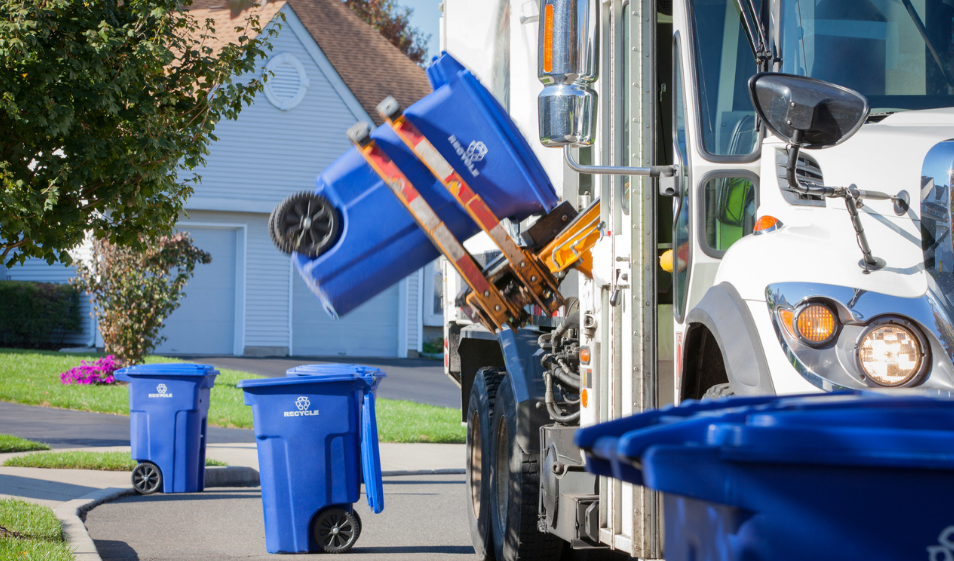
Putting it into Action
City of Boise, ID
Problem: A 2014 study of the Ada County landfill found the majority of Boise’s waste was organic material.
Solution: In response, the City of Boise began a citywide curbside compost program in 2017. The program was initially funded with just a $3.40 fee increase per household per month.
Outcome: The program is already successfully diverting approximately 30% of all residential waste, more than 70,000 tons of material with a 97% reported participation rate to date.13 It’s a small cost that Peter McCullough, Boise Materials Program Manager says is worth it because curbside compost is “far and away our greatest diversion program we have for residential waste.”14
3. Cities Should Spur Market Demand by Adopting Standards for Environmentally Preferential Procurement (EPP)
A more sustainable waste management system depends on the demand for products that contain reused, recycled or composted materials, thereby promoting circularity. Cities are often among the largest employers in their regions and purchase billions of dollars in products and services. With environmentally preferential procurement (EPP), they can actively support higher material uses, generate local demand for recycled products and serve as an example to other major institutions such as schools, universities, hospitals or private industry.
State governments can support EPP through cooperative purchasing systems as well. The Minnesota Cooperative Purchasing Venture is established by state law and allows counties, cities, towns, townships and school districts to purchase goods and services through contracts that have been arranged by the Minnesota Office of State Procurement. The program is designed to reduce time and costs for cities to research their own procurement contracts while also setting bulk purchase prices. The state also evaluates the sustainability of these contracts – offering 100% sustainable contracts for items like cleaning supplies, carpet or office furniture – while providing guidance on more sustainable options in other categories.15
By adopting EPP policies, cities can require that government projects, agencies and events buy recycled products and prioritize “green” products that contain reused, recycled or composted materials. From Miami, FL16 to Millinocket, ME,17 municipalities of all sizes have adopted green purchasing policies.
Path Forward:
- The Urban Sustainability Directors Network offers a Sustainable Purchasing Playbook to guide policy, procedures and contracts.
- The National Association of State Procurement Officials Green Purchasing Guide also offers an online tool to help draft a Green Purchasing Policy.
- The Model Compost Procurement Policy from Environmental Law Institute and the Natural Resources Defense Council requires municipalities to purchase compost for appropriate public projects, as well as encourages quasi-governmental and local entities to purchase compost.
4. Cities Should Support or Incentivize Local Business to Adopt EPP
In addition to their own procurement, cities can work with major institutions or local sustainable business coalitions to recognize or incentivize EPP throughout the community as part of a broader economic development strategy. These programs can take two different forms: a.) cities can incentivize or incubate new businesses involved in recycling or remanufacturing; and b.) they can also reward or promote other businesses for their own zero waste practices.
Putting it into Action
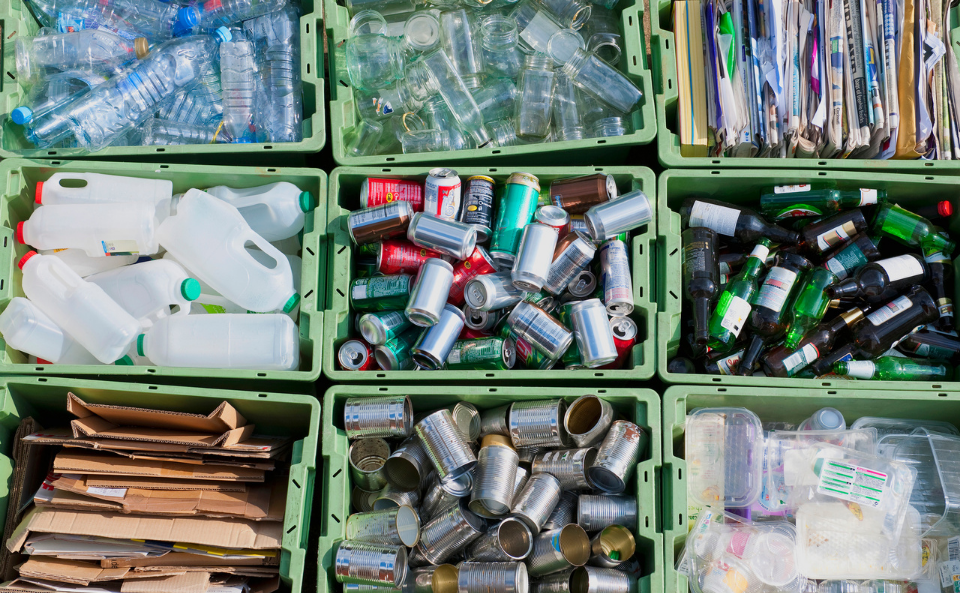
City of Austin, TX
Problem: In 2017 city leaders recognized that Austin recycling rates had begun to stagnate, falling short of city goals to keep 90% of disposals out of landfills by 2040.
Solution: The City of Austin’s Circular Economy Program, a partnership between Austin Resource Recovery and the Economic Development Department, ensured that multiple resources supported businesses, as well as non-profits throughout the community.
Outcome: Growth of the city’s [RE]verse Pitch prize competition, which rewards ideas for using hard-to-recycle materials, monthly meetups for the circular economy business community and a materials marketplace to facilitate exchanges between participants.18
The future needs to include local product development, product production, manufacturing… You need local manufacturing of that commodity into your products whether it’s plastic or it’s cardboard or it’s textiles… You need to have some local recycling system and marketplace for it.
Rajesh Buch, Circular Economy Practice Lead, Director of Business Development, Arizona State University Rob and Melanie Walton Sustainability Solutions Service and Former Director of the Resource Innovation and Solutions Network (RISN)
5. Cities Should Set Clear Standards for Wellbeing and Equity in Sanitation Services
Trash and recycling collection is one of the most dangerous jobs in the U.S., with the fifth-highest rate of fatal injuries. Clear safety standards and better pay can lead to better training, improved efficiency and higher productivity and yield. Strong safety standards also include equity, workers’ rights and the health and wellbeing of employees. To protect all employees, cities must not only establish standards for themselves, but also the contractors with whom they work.
Cities should prioritize working with organizations that have strong standards themselves and do regular audits to ensure that the standards are being met. The city of Roseville, MN requires all city contractors to comply with the city’s Racial Equity Action Plan. When the city evaluated proposals for a new recycling and compost contract, it warded 15% of available points based on how well the submissions reflected the city’s diversity, equity and inclusion (DEI) goals.19
Examples of Standards:
- Establish goals to ensure the health, safety and wellness of all workers.
- Meet or exceed the living wage or prevailing wage of the local community.
- Reduce reliance on temporary labor and use contractor opportunities to recruit for permanent positions.
- Offer competitive wages and benefits to both non-union and union employees.
- Ensure all contracts include safety and health standards and benefits.
- Invest in employee retention strategies.
- Provide predictable scheduling for work that is shift-based or variable.
- Require thorough safety training for all necessary work, and continuously update these trainings to meet evolving standards.
Get the Complete Policy Brief
Achieve circular waste management in your city.
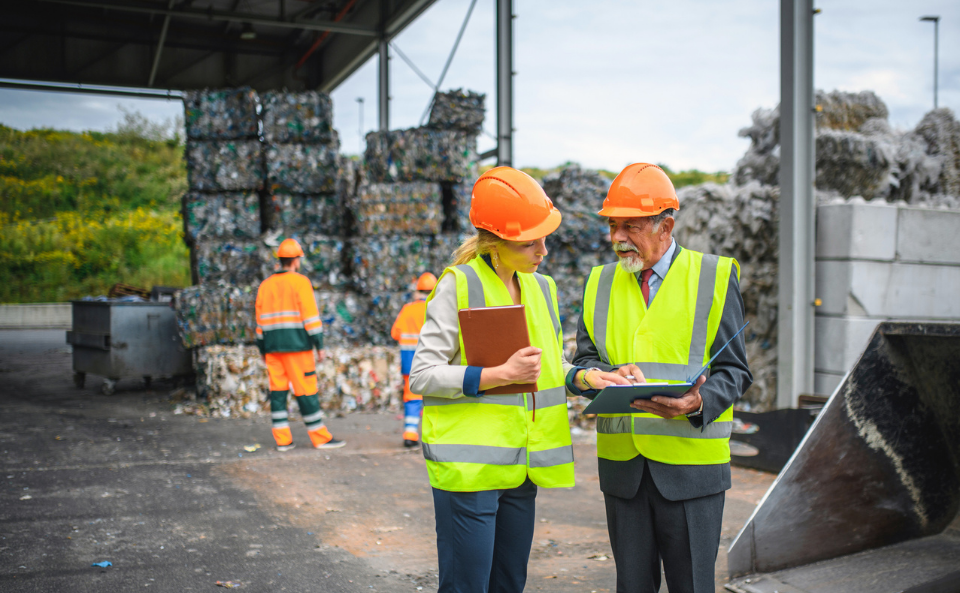
None of the above recommendations are possible without action and support from states, federal government, producers, haulers and processors who participate in the waste management. The following recommendations at other levels of government should all be supported through enhanced municipal understanding and advocacy.
1. State or Federal Governments Should Establish Extended Producer Responsibility (EPR)
Extended producer responsibility covers a range of policy options that would make manufacturers accountable for effective recycling of products and minimize environmental impacts throughout their lifecycle.
For cities, EPR promises to help share financial burden and shift waste from the disposal stream to a circular stream, where resources remain resources and cities simply act as the interface between their residents and the industry interested in managing their resources in a circular way, again and again. EPR should be constructed around a holistic system that can collect and recycle very high levels of resources. The focus should be placed on the performance goal and the role of industry to meet that goal either on their own or in partnership with the municipality.
The big elephant in the room is producer responsibility. We’ve got to shift the cost away from the public sector and put it back on the private sector – that creates the products to begin with.
David Hurd, Recycling Veteran
EPR systems are useful for any material with specific disposal needs such as batteries, electronics, mattresses and more. They can also take several different forms, including:
1. “Polluter Pays” – Under this principle, state or federal government legislation requires companies to be responsible for effective recycling of the waste they produce. Production fees or surcharges placed on specific items such as packaging are used to finance infrastructure improvements or support operations. Producers’ specific financial and operational responsibilities — minimal to exclusive — depend on how the system is set up. But, it is critically important with any EPR system that government agencies perform an oversight and accountability role.
2. Deposit Return System – Deposit return systems (DRS) are a proven tool to recover materials for reuse and high-quality recycling. These systems require consumers to pay a small deposit when they purchase a beverage can or bottle, which they get back when they return the container to a redemption location. While DRS are a form of extended producer responsibility (EPR), a general EPR law does not replace DRS legislation. The success of DRS and other EPR measures often signal trouble for waste incumbents and material recovery facilities (MRFs), who risk losing valuable recyclable material when funneled into an alternative collection and processing system. Therefore, as associated transition and infrastructure costs are considered, additional funding from producers will be needed to continue the viability of the recycling sector. As valuable material is removed from curbside programs, an equitable transition plan that assesses the scale of potential revenue loss and costs (and savings) of a DRS is needed. Successful DRS have 90% collection rate targets. If the target is not met, the producers operating the system do not receive the unredeemed deposit fees. Instead, these fees are invested back into the infrastructure needed to reach the target.
In U.S. jurisdictions with beverage container DRS, collection rates typically exceed 60%. An 80-90% collection rate is well within reach if the systems align with best-in-class principles which include a minimum 10-cent deposit fee, strict reporting requirements, clear collection targets with appropriate penalties and minimum recycled content mandates.
2. State or Federal Governments Should Adopt Minimum Recycled Content Mandates that are Consistent, Aggressive and Achievable
Recycled content standards require that producers use a certain level of recycled content in their products. These legal requirements can balance supply and demand to expand markets for recycled content.
Potential pitfalls of bad legislation can have unintended impact on recyclers following the rules though undercut by recyclers evading the rules. Recycled resin is a globally traded commodity where traceability systems can be very difficult to monitor. It is important that legislation is well-scoped, has a verification system in place and is consistent with standards in Europe and North America.
The following guidelines are meant as a tool to help cities communicate the key legislative components that need to be considered:
- Establish clear scope and definitions: Clear and objective definitions help to eliminate loopholes that might allow producers to report inflated recycled content numbers or navigate around using actual recycled materials.
- Set appropriate targets: Minimum recycled content mandates should be appropriately aggressive, but not technically unfeasible.
- Develop robust standards: Expectations should be clear to ensure that stakeholders know exactly what is expected of them.
- Consider product design and safety: As more products are designed for reuse, it will be more cost-effective and overall simpler to recycle and reuse more materials.20
3. Oversight Agencies Should Establish an Effective Data and Metrics System for Quality Control and Material Traceability
Good data offers a pathway to circularity. A state or federal oversight agency such as the Environmental Protection Agency (EPA) and the Federal Trade Commission (FTC) should expand data collection and support local governments, haulers and processors to report consistent data such as:
- Collection rates, including total collection rates and material-specific rates
- Population serviced
- Financial statements
- Percentage of recycled materials sold
To ensure the reliability and accuracy of the data gathered on recycled waste, the system should consist of electronic registries that set technical specifications for the quality requirements of sorted waste, or average loss rates for sorted waste for various waste types and waste management practices, respectively.
Federal agencies responsible for standards that define recyclable, such as the FTC Green Guides for Marketing and how the cycling rate is calculated, should undertake consultative and transparent development and routine review of such standards, to ensure continuous improvement in meaningful measurement.
Average loss rates should only be used in cases where reliable data cannot be obtained otherwise and should also be calculated on the basis net of all contamination and non-targeted materials.
Real recycling requires proper calculation and measurement points. There is a need to have harmonized and granular data reporting which can be built into the requirements of municipal contracts with service providers.
Elizabeth Balkan, Director, Reloop North America
4. State or Federal Governments Should Collaborate to Create Standardized Guidelines for Recyclability and Labeling
There is a need to modernize waste management standards and practices to reduce resident confusion and incentivize industry to make investments in circularity. The onus should not be placed on the consumer to know or decipher what can or cannot be recycled and composted, and design guidelines should ensure that this is simpler to understand.
The entire value chain needs to be in dialogue, from the original packaging designers and manufacturers (upstream) to the recyclers (downstream), to create products that are more easily recyclable. To do this, legislation can be passed clearly defining recycling as the process in which the related item(s) are collected, sorted and converted into raw material – which is then used to produce a new product (that may be the same item once again). This does not include any form of incineration or chemical recycling.
Likewise, a universal and realistic definition of “recyclability” will help prevent misalignment between marketing claims and recycling outcomes.
To ensure recycling actually takes place, packaging should not be considered recyclable unless:
- It can be effectively and efficiently recycled
- It actually gets recycled at scale and turned into secondary raw material
- New packaging will be designed for circularity and recyclable or compostable at scale across the U.S. in less than four years
- At least 95% of a packaging unit will be recyclable
- Recycling the packaging is accessible and easy for all
In addition, while technically most plastics are recyclable, recycling infrastructure differs from place to place and most do not have the machinery needed to recycle everything that goes into the system. States need to establish recycling criteria that outline infrastructure capacity and provide thorough education and clear labeling that communicates to consumers what can be recycled or not on a regional basis. This applies to compostable items as well. Many items that are technically compostable only break down in large industrial compost facilities to which most of the country does not currently have access.
Standardized guidelines should include:
- Definition of terms such as recycling, compost, materials included, etc.
- Targets to define success
- Accountability requirement and appropriate penalties for not achieving the targets
- Equity and convenience provisions
- Disincentivize waste sent to landfill
- Recycled content mandates
Putting it into Action
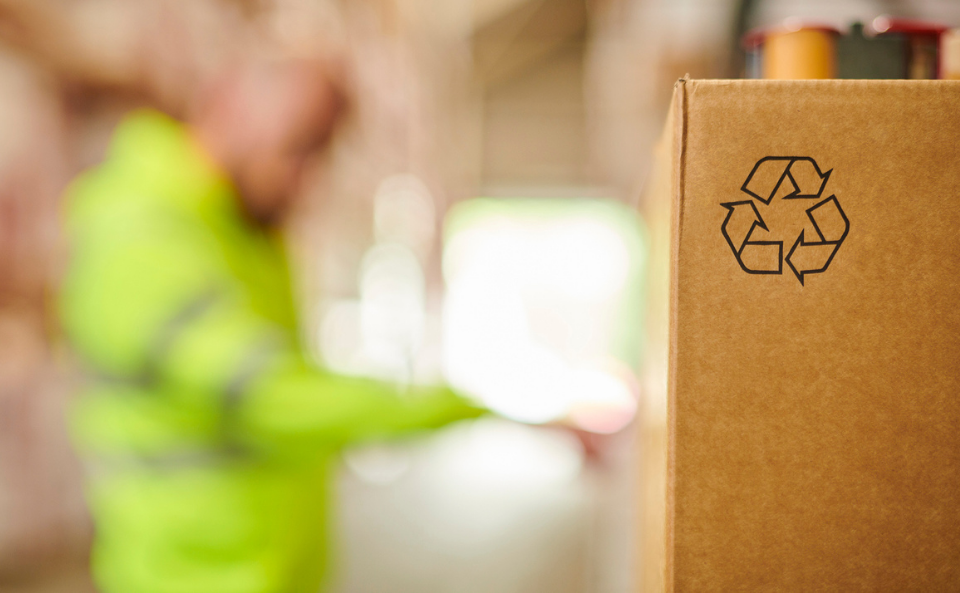
State of California
Problem: Labeling and package design can be confusing to consumers who are trying to recycle correctly.
Solution: In October 2021, California passed a series of laws to clarify recycling in the state. This legislation helps to ensure that industry is properly recycling products and making it clear to consumers what is or is not recyclable and/or compostable.
- SB 343, “Truth in Labeling” prohibits the use of the chasing arrows symbol or other recycling messaging on items that are not recyclable. This law also clarifies the definition of “recyclable” and lays out clear guidelines.
- AB 1201, “Compostable Product Standards” requires all materials labelled “compostable” are certified by a third-party to ensure that they break down into organic material and do not contaminate the compost. It also prohibits look-alike products.
- AB 881, “Plastic Waste Export” closes a loophole that allowed mixed plastic exports to be counted as recycling. Now only materials that are truly recycling count towards state and local recycling rates.
Outcome: The state of California would be the 5th largest economy in the world if it were a sovereign nation. The standards set for packaging design and labelling are already being examined as a template for other states to follow. But even without additional action, it is likely that these requirements will spur changes in consumer products nationwide.
Authors
- Elizabeth Balkan, Director, Reloop North America
- Cooper Martin, Director, Sustainability and City Solutions, National League of Cities
- Kara Weinstein, Project Manager, Reloop Platform
Acknowledgments – Authors Offer Special Thanks to:
- Kate Bailey, Director, Eco-cycle Solutions
- Rajesh Buch, Circular Economy Practice Lead, Director of Business Development, Rob and Melani Walton Sustainability Solutions Service
- Nora Goldstein, Editor, Biocycle
- Kate Krebs, Director of Industry Affairs, Closed Loop Partners
- David Hurd, Recycling Veteran
- Alicia Marseille, Interim Deputy Director, Rob and Melani Walton Sustainability Solutions Service
- Clarissa Morawksi, CEO and Founder Reloop Platform
- Members of the NLC Energy, Environment and Natural Resource Policy Committee
References
- C40 Cities Climate Leadership Group. 2021. https://www.c40.org/researches/mckinsey-center-for-business-and-environment
- Sustainable Packaging Coalition. 2021. https://sustainablepackaging.org/findings-released-spc-centralized-study-availability-recycling/
- Mouw S. The Recycling Partnership. 2020 State of Curbside Recycling. https://recyclingpartnership.org/wp-content/uploads/dlm_uploads/2020/02/2020-State-of-Curbside-Recycling.pdf
- Fox A. The U.S. is the World’s Number One Source of Plastic Waste. Smithsonian 2020. https://www.smithsonianmag.com/smart-news/us-worlds-number-one-source-plastic-waste-180976214/
- Azoulay D, Villa P, Arellano Y, Gordon M, Moon D, Miller K, Thompson K. Plastic and Health: The Hidden Cost of a Plastic Planet. Ciel. 2019 Feb. https://www.ciel.org/wp-content/uploads/2019/02/Plastic-and-Health-The-Hidden-Costs-of-a-Plastic-Planet-February-2019.pdf
- Katz C. Piling Up: How China’s Ban on Importing Waste Has Stalled Global Recycling. Yales Environment 360. Yale School of the Environment. 2019 Mar. https://e360.yale.edu/features/piling-up-how-chinas-ban-on-importing-waste-has-stalled-global-recycling
- Brock J. A Reuters Special Report: The Plastic Pandemic, COVID-19 Trashed the Recycling Dreams. Reuters Investigates. 2020 Oct. https://www.reuters.com/investigates/special-report/health-coronavirus-plastic-recycling/
- Lewis J. Officials Say 25% of Memphis Solid Waste Crews have COVID-19 or Are in Quarantine. Nextstar Media Inc., WREG Memphis. 2020 Dec. https://www.wreg.com/news/officials-say-25-of-memphis-solid-waste-crews-have-covid-19-or-are-in-quarantine/
- Calfas M. A Struggling Recycling Industry Faces New Crisis with Coronavirus. Los Angeles Times. 2020 Dec. https://www.latimes.com/environment/story/2020-12-05/coronavirus-recycling-crisis
- MacQuibban J. The City of Munich – The City Committed to Go Beyond Recycling by Developing a Zero Waste Strategy Focused on Reuse and Repair. 2020. https://zerowastecities.eu/wp-content/uploads/2020/12/zwe_case-study_the-story-of-munich_en.pdf
- City of Boston. Zero Waste Boston – initiative to transform Boston into a Zero Waste city Last updated 2020 Feb. https://www.boston.gov/environment-and-energy/zero-waste-boston
- City of Arcata, California. Zero Waste. https://www.cityofarcata.org/275/Zero-Waste
- City of Boise. Compost. https://www.cityofboise.org/departments/public-works/curb-it/compost/
- Idaho Statesman. https://www.idahostatesman.com/news/local/community/boise/article154622809.html
- Minnesota Pollution Control Agency. Sustainable Government Purchasing. https://www.pca.state.mn.us/waste/sustainable-government-purchasing
- The City of Miami. Green Initiatives. https://library.municode.com/fl/miami/codes/code_of_ordinances?nodeId=PTIITHCO_CH22.5GRIN_ARTIIIENPRPU
- The Town of Millenocket. Sustainable Procurement Policy. https://millinocket.org/wp-content/uploads/2019/05/Procurement-Policy-PDF.pdf
- City of Austin Circular Economy Program. http://austintexas.gov/circulareconomy
- City of Roseville. Strategic Racial Equity Action Plan. http://www.cityofroseville.com/DocumentCenter/View/31849/Strategic-Racial-Equity-Action-Plan
- Balkan E. Reloop. Policy Guidelines for Recycled Content Mandates. https://www.reloopplatform.org/new-white-paper-policy-guidelines-for-recycled-content-mandates/
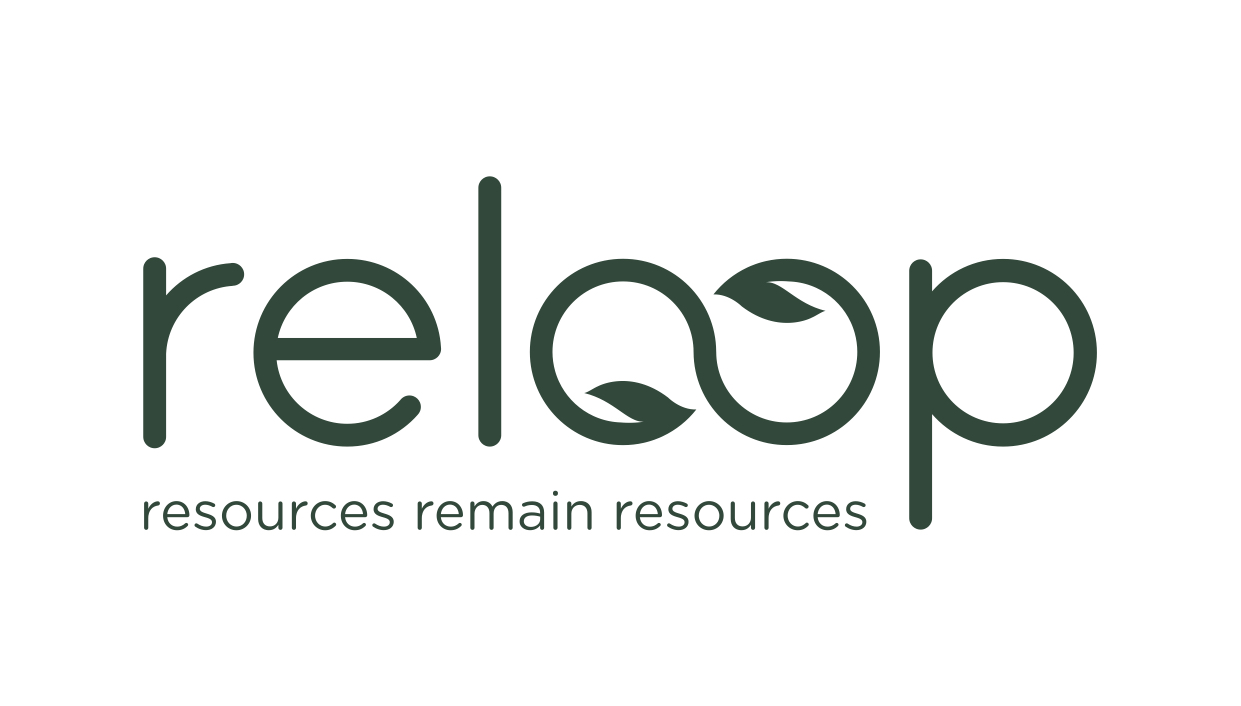
A collaboration between Reloop and the National League of Cities.
